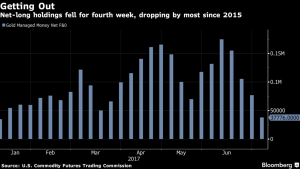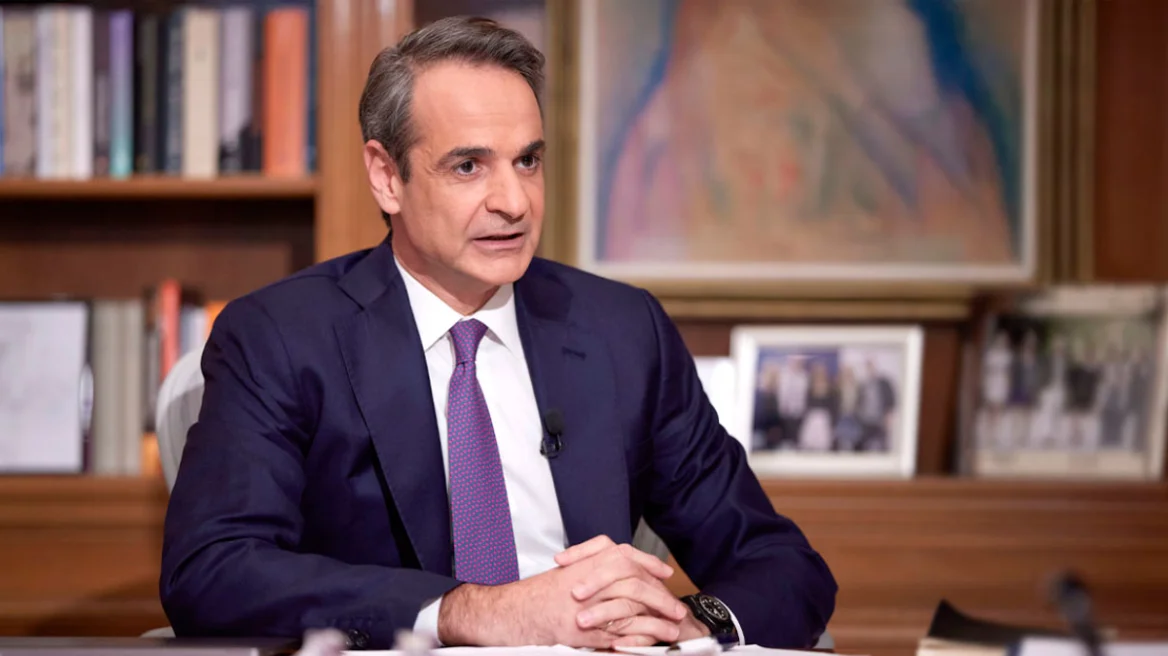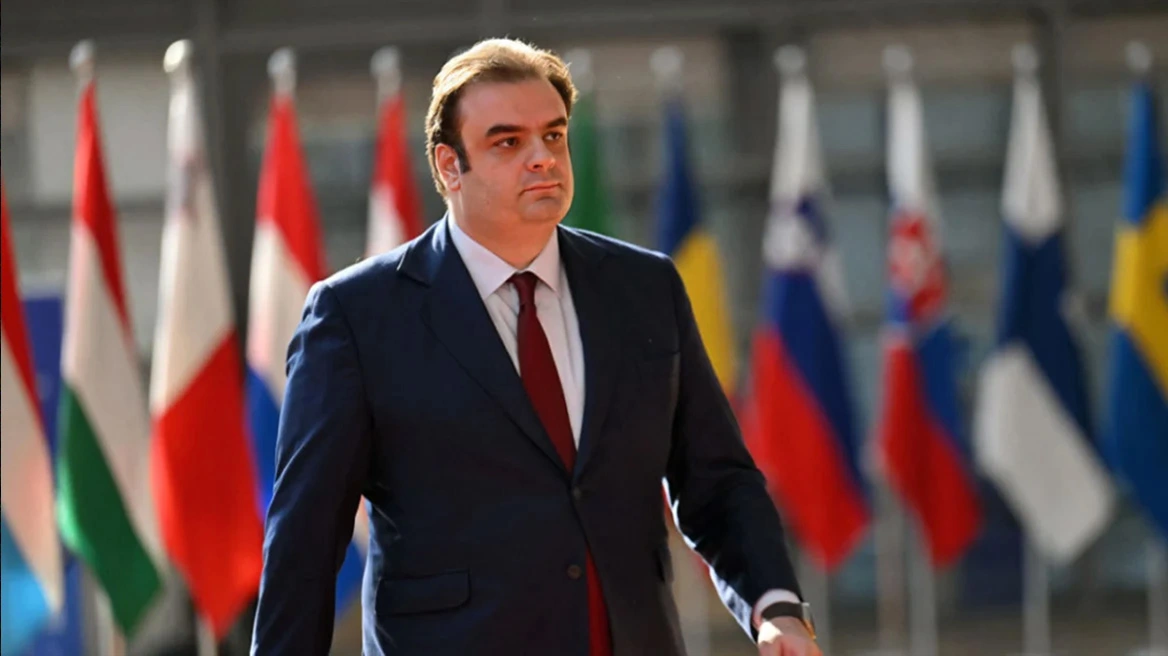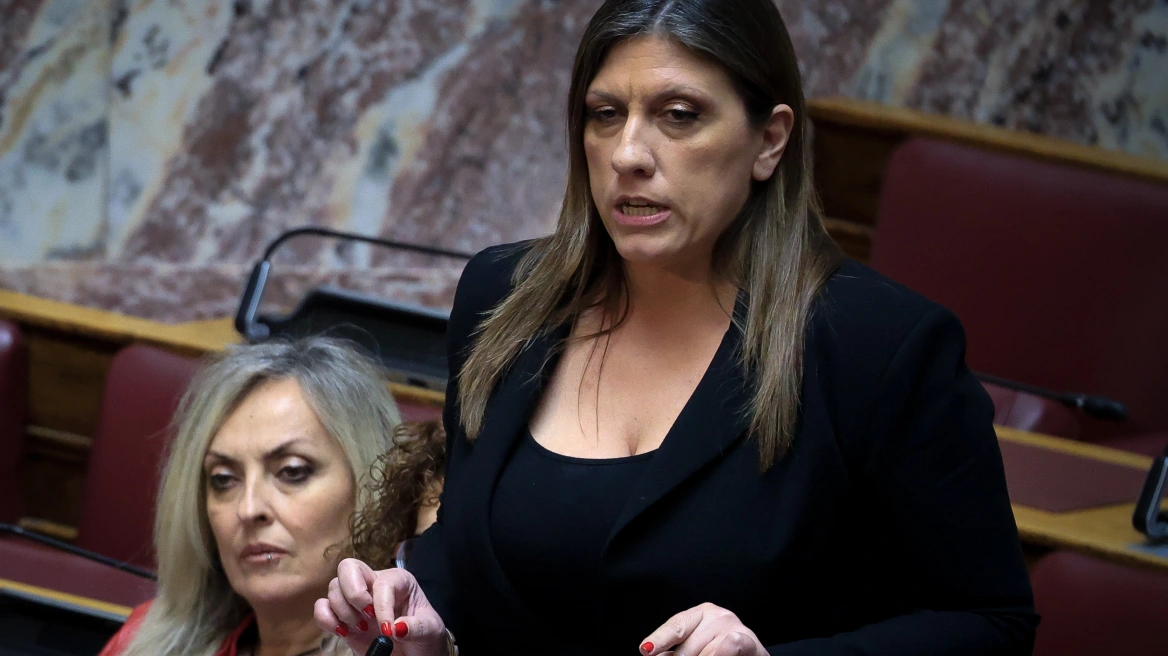A month ago, money managers were the most optimistic on gold this year. Now, they can’t seem to unload bullion fast enough.
Hedge funds’ net-long positions, or the difference between bets on a price increase and wagers on a decline, fell last week by more than half, the biggest reduction since 2015. Exchange-traded products backed by precious metals saw cash outflows over the past month, while most other commodity funds took in more investor money. Total assets in SPDR Gold Shares, the world’s top bullion ETF, fell to the lowest since March last week.
Even with signs of escalating geopolitical tensions — often a spur for buying gold as a haven — prices that reached an almost seven-month high in June have now dropped for five straight weeks, the longest slump this year. Investors are exiting in part because the Federal Reserve and other central banks are indicating more interest rate increases, which can curb the appeal of gold because the metal pays no interest.
“I struggle to make a particularly bullish case on gold,” said Rob Haworth, a senior investment strategist at U.S. Bank Wealth Management, which oversees $145 billion in assets. “We think the Fed is on track and continuing to increase rates, and I think that puts a lid on gold.”
The net-long position in gold futures and options dropped 51 percent to 37,776 contracts for the week ended July 3, according to Commodity Futures Trading Commission data released four days later. It was the least bullish holding since January. As recently as June 6, the holdings were at 174,658, the most since November. Short positions, or bets on price declines, surged 31 percent to the highest since January 2016.
(Click to enlarge)
Futures traded on the Comex in New York fell 2.6 percent last week to $1,209.70 an ounce on Friday, marking the longest streak of weekly declines since December, and traded at $1,207 on Monday.
Prices rose 7.9 percent through the first half of this year amid uneven economic growth in the U.S. and geopolitical tensions such as Brexit and the French election. The metal was also aided by speculation that the world’s central banks would remain ready to prop up economic growth.
BNP Paribas SA, which topped Bloomberg gold accuracy rankings in the second quarter, says more losses are in store. Harry Tchilinguirian, the head of commodity markets strategy at BNP in London, forecast bullion will drop to $1,165 in the fourth quarter, in part because of the Fed’s drive to raise rates.
Minutes of the Fed’s June meeting, released July 5, did little to change market expectations for a third U.S. rate hike this year, as officials viewed tepid inflation rates as transitory. The central bank also signaled that September could mark the start of unwinding its $4.5 trillion balance sheet.
Meanwhile, Bank of England Governor Mark Carney has suggested that the time is nearing for a rate increase, and Canada’s Stephen Poloz reiterated he may be considering a hike. Bonds across Europe fell on Thursday after the results of a French debt auction showed a drop in excess demand for 30-year securities.
Not everyone is pessimistic. Gold will probably trade in a range of $1,200 to $1,300 as the metal tracks U.S. real interest rates, according to UBS Group AG’s wealth management unit.
IMF Cut
Late last month, the International Monetary Fund cut its outlook for U.S. economic expansion, citing hurdles ranging from an aging population to low productivity growth. Alejandro Werner, director of the IMF’s Western Hemisphere Department, said at a press briefing in Washington that the IMF “removed the assumed fiscal stimulus from our forecast” because of policy uncertainty in the country.
Gold traders and analysts surveyed by Bloomberg remained bullish for a third week after North Korea’s test of an intercontinental ballistic missile spooked financial markets.
“Gold will be supported to a good extent with these geopolitical tensions with North Korea,” Donald Selkin, the New York-based chief market strategist at Newbridge Securities, which manages $2 billion in assets, said in a telephone interview. “Geopolitical hot spots will keep it from really falling out of bed. Gold is a one of those traditional safe havens.”
Ask me anything
Explore related questions






